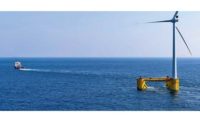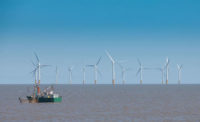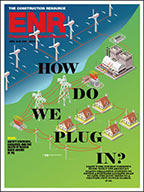Offshore wind energy could add 4.2 million megawatts to the generating capacity of the U.S., according to the National Renewable Energy Laboratory, but the U.S. market has stalled almost completely, hindered by regulatory uncertainties, political opposition, litigation and a lack of available financing. Recently, however, several broad market and regulatory themes have emerged—record low energy prices, technology improvements, the start of construction of the first commercial offshore project near Rhode Island’s Block Island and increasingly favorable federal and state policies for renewables such as the Clean Power Plan—that give reasons to believe that the sector has reached an inflection point in 2015. The question now is how to build and sustain the momentum.
Obtaining financing necessary to fund these large offshore wind projects remains a substantial obstacle in the U.S. A project’s cost can range into the billions of dollars, and banks and equity investors are understandably wary of the risk associated with these high capital investments, especially since much of this cost is currently captured in an undeveloped supply chain. Local policies that promote supply chain development and drive down the costs of the different components in the chain, such as constructing docking and landing stations, forging foundations, submerging transmission lines, building deep water platforms, and attracting turbine manufacturers, can lower the investment risk and increase the project’s attractiveness.
Currently, the only established supply chain is aimed at supporting onshore wind and located centrally within the United States, where there is an abundance of projects. This offers an unprecedented opportunity for U.S. engineering, procurement and construction (EPC) firms to strengthen the coastal supply chain. Not only will this help the EPC secure a foothold in the sector as a market leader, it will help projects secure the crucial capital investment financing needed to grow this nascent market.
Lowering the overall project costs will obviously make the investment more attractive, but there is a less obvious advantage. Construction costs are built into the price the utility pays the project owner for electricity. If rates are too high, there is a risk that utilities won’t sign long-term power purchase agreements (PPA) with the developer. This is due, in part, to the fact that utilities may be limited in their ability to absorb higher rates since the retail price of electricity is usually set in a proceeding before a state regulatory commission. By driving down costs, EPCs can help lower the price the utility must pay for the off-take of electricity, reduce the risk the utility won’t sign the PPA, and increase the overall attractiveness of the investment.
Establishing and strengthening the supply chain in the U.S. has been called a “chicken and egg ” dilemma in that offshore wind will become more viable with the development of the supply chain, while the supply chain will not develop without projects to support. European firms have solved that puzzle and are equipped to bring their solution to the U.S. market. U.S. EPCs must jump on early opportunities to be a part of the development process or they will cede them to European competitors. A number of states, organizations, and companies are already working on this front. Liz Burdock, Executive Director of the Business Network for Offshore Wind, describes the problem precisely: “Many U.S. companies are evaluating how they can pivot into the offshore wind supply chain . . . It is important that we enhance U.S. business expertise and build out the supply chain now; otherwise, when commercial-scale U.S. projects go to construction the work will be done by European firms.” This fact is no more evident than in the Block Island project. Deepwater Wind, the project’s developer, has only engaged one third-party U.S. company to assist in the construction of the project. But there is certainly hope. Deepwater Wind anticipates that its second and larger 150-200-unit project will be able to achieve much lower rates as construction costs come down and a U.S. supply chain for offshore wind energy is built up.
EPCs interested in seizing first-mover advantage may be able to pivot into offshore wind energy development by hiring experienced offshore personnel from the deepwater oil and gas exploration and development industry or by looking abroad and bringing aboard technical expertise from their European competitors. There is certainly a business risk here for EPCs to expand and ramp up in a new market, but with this risk come great opportunities. An EPC with a mindful focus on the elements that contribute to cost and uncertainty may be able to generate tremendous value to the market and facilitate the financing necessary to get offshore wind off the ground.
Jeffrey Karp is a partner, Jim Wrathall is an attorney, Van Hilderbrand is an associate and Morgan Gerard is a research assistant with Boston-based law firm Sullivan & Worcester LLC.



